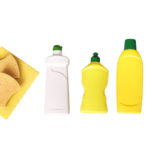Comparing GHS SDS Requirements in the US, Canada, and Mexico
As the global economy becomes more interconnected, ensuring chemical safety across borders has never been more important. The Globally Harmonized System (GHS) for classifying and labeling chemicals was developed by the United Nations to standardize and simplify hazard communication internationally. However, despite adopting GHS, countries like the United States, Canada, and Mexico have implemented the system with regional nuances. Understanding these differences is crucial for companies operating across North America.
This blog outlines a comparison of GHS SDS requirements in the US, Canada, and Mexico; highlighting key similarities, differences, and compliance considerations.
GHS SDS: A Common Foundation
At the heart of GHS is the Safety Data Sheet (SDS), a standardized document that communicates the hazards of chemicals and provides safety guidelines. All three countries use the 16-section format recommended by GHS and have aligned their national regulations to some extent. However, each country has taken its own regulatory path, with varying degrees of alignment to GHS revisions and different enforcement mechanisms.
United States: OSHA and the HCS
The United States implements GHS through OSHA’s Hazard Communication Standard (HCS) under 29 CFR 1910.1200. OSHA adopted GHS in 2012 and updated the standard to align with GHS Revision 7/8 with a compliance deadline of July 2027.
Key features:
- Mandatory 16-section SDS format
- Labels must include product identifier, signal word, hazard statements, pictograms, precautionary statements, and supplier info
- Only English is required
- SDS must be readily accessible to employees in the workplace
- Penalties enforced by OSHA for non-compliance
Canada: WHMIS 2015 and the HPR
Canada enforces GHS through the Workplace Hazardous Materials Information System (WHMIS) 2015, updated under the Hazardous Products Regulations (HPR). The HPR was updated in 2022 to align with GHS Revision 7/8, with a compliance deadline of December 2025. This will be the first time the US and Canada are aligned with the same GHS revision.
Key features:
- Uses the 16-section SDS format
- SDSs must be bilingual (English and Canadian French)
- Additional labeling elements required by Health Canada
- WHMIS incorporates its own hazard classes (e.g., Biohazardous Infectious Materials)
- Disclosure of chemical identity (confidential business information) may be protected under the Hazardous Materials Information Review Act (HMIRA)
Canada’s bilingual SDS requirement and strict enforcement of SDS translation make it unique in the region.
Mexico: NOM-018-STPS-2015
Mexico aligns with GHS through NOM-018-STPS-2015, which establishes criteria for the identification and communication of hazards from hazardous chemicals in workplaces.
Key features:
- Based on GHS Revision 5
- 16-section SDS format is mandatory
- SDSs must be in Spanish
- Includes both physical and environmental hazards
- SDS and labeling requirements apply to employers and chemical manufacturers/importers
- Includes occupational exposure limits (OELs) specific to Mexico
Mexico’s SDS requirements reflect both GHS principles and local labor safety laws under the Secretariat of Labor and Social Welfare (STPS).
Side-by-Side Comparison
| Feature | US | Canada | Mexico |
| GHS Revision | Currently 3, moving to 7/8 | Currently 5, moving to 7/8 | 5 |
| SDS Language | English | English & French | Spanish |
| SDS Format | 16-section | 16-section | 16-section |
| Regulatory Body | OSHA | Health Canada | STPS |
| SDS Update Timeline | When new data is available | Some provinces/territories require update every 3 years. | When new hazards identified |
| Emphasis | Worker safety, hazard disclosure | Bilingual communication, worker training | Employer responsibility, national labor laws |
Cross-Border Compliance Tips
For businesses operating in all three countries, here are practical tips for managing SDS compliance in North America:
- Maintain region-specific SDS versions: Ensure SDSs are properly translated (English, French, Spanish) and comply with each country’s format and labeling rules. It is not enough to simply translate an English US SDS into French and Spanish.
- Track regulatory updates: GHS revisions are adopted at different times—stay current with OSHA, WHMIS, and NOM updates.
- Use bilingual SDS templates: Especially important for Canada and Mexico.
- Train employees: WHMIS and OSHA require employee training for handling hazardous materials.
How Dell Tech Can Help
While the US, Canada, and Mexico all follow the GHS framework, differences in language, regulatory bodies, and implementation timelines mean that SDS compliance isn’t one-size-fits-all. Businesses need to adapt to regional requirements and ensure that SDSs are accurate, accessible, and compliant in each jurisdiction.
Whether you’re exporting chemicals, managing warehouses, or manufacturing products across borders, understanding the GHS SDS requirements in North America is vital for chemical safety and regulatory compliance. Dell Tech can author US, Canadian, and Mexican GHS SDSs in English, French, and Spanish. Contact us today for more information about our services.
DELL TECH HAS PROVIDED PROFESSIONAL, CONFIDENTIAL CONSULTING SERVICES TO THE SPECIALTY CHEMICAL INDUSTRY IN CANADA, THE USA, EUROPE AND ASIA FOR THE LAST 40 YEARS.





